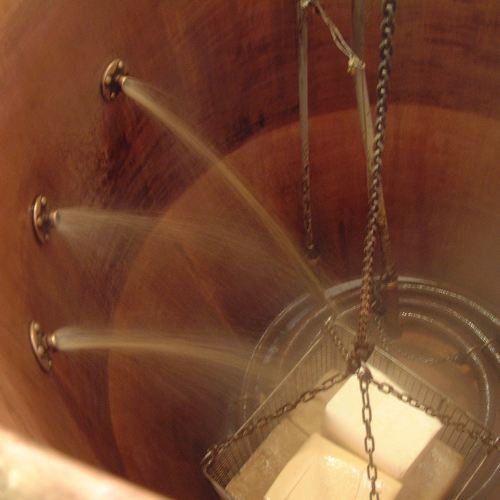The use of invert sugars in brewing has a long history dating back to the time when the tax on beer was on the weight of malt used in the recipe, not on ABV as today. Brewers of the day were able to achieve high alcohol levels with reduced malt bills by incorporating up to 30-50% invert sugar and pay less tax so made more profit. Cane sugar as a raw material was readily available from West Indies, Africa and other tropical nations a good deal cheaper than the cost of malt. Indeed some breweries in Africa today use nearly 100% sugar for fermentations where the cost of imported malt is too high.
Cane sugar was imported into London and Liverpool where big refineries were established like Tate & Lyle, Eastwick’s (now Ragus Sugars) and Billingtons. It was processed into many different grades for baking, confectionary & of course brewing. For brewing, it was best to handle as a syrup so it was shipped warm in insulated road tankers to be stored in heated tanks at the brewery. It could then be precisely pumped to the kettle where it would be quickly dissolved into the wort during boiling.
Today the price of such sugars is as high as malt so the economic benefits are not so great for the brewer. Many large breweries have drifted away from invert syrups using cheap malt and even raw barley instead. This has meant that demand for bulk invert has dropped below the need for such handling. To supply the smaller demand, the syrup is evaporated into 25kg solid blocks of sugar. In this format, it has a much longer shelf life than a liquid syrup.
However, this format presents a problem for the brewer a new way to handle. The convenience of pouring a syrup is no longer possible. The block must be dissolved into the hot wort which it will readily do in the kettle. To make life easier, the brewer should use multiples of the 25kg block weight in the grist as this eliminates the need to use part blocks.
However, manhandling a 25kg block of sugar through a manway door into a copper is also tricky and possibly unsafe in today’s smaller brewhouse. Breaking them up is required and the individual pieces weighed to the correct amount. Should it be necessary to reduce the block size to accommodate a smaller weight in the recipe or fit it through a manway door, a lump hammer and a bolster chisel should be used to spilt the block first. A line is drawn by scoring across the centreline of the block and the bolster chisel gently tapped along this line several times to make a decent crack. Then a few hard knocks with the hammer on the chisel on this line and the block will split neatly in half, like splitting a masonry brick. This can be repeated to make smaller and smaller blocks until it fits into the kettle or the required weight is achieved.

Breweries with large coppers can rig up a handling system like the one illustrated here to carefully lower blocks into the copper which will dissolve as the hot wort runs in from the mash tun. Some brewers work with an underback between the mash tun and the kettle and if big enough, the block can be carefully put into this and be dissolved as the worts are run off to the kettle.
Any small, undissolved lumps at the end of wort run off can simply be dropped into the copper.
The modern brewer should consider using invert sugars as there is much ability to create higher ABV, lovely colours and interesting flavours. They are highly fermentable and stored as a block have a fairly indefinite shelf life, if kept cool and dry.
At greater than 15-20% of the grist by extract weight, the brewer should consider the use of yeast nutrition as having no protein, they will dilute wort free amino nitrogen.
Have any questions on the brewing process? For more information on invert sugars, please contact techsupport@murphyandson.co.uk

